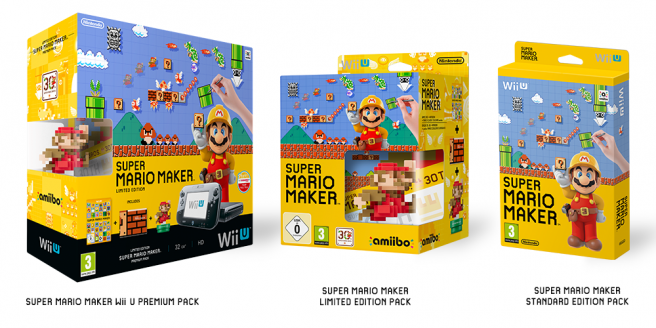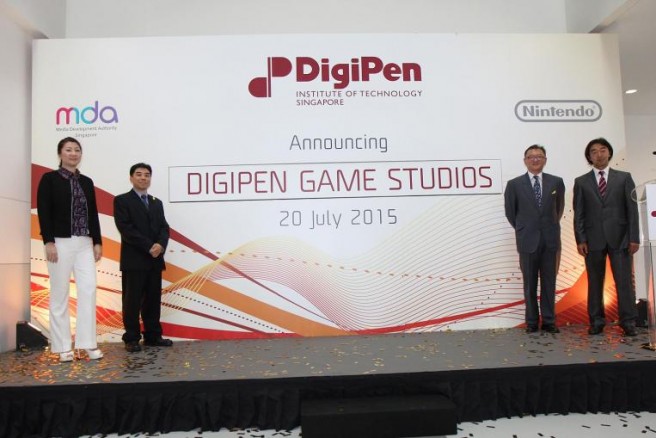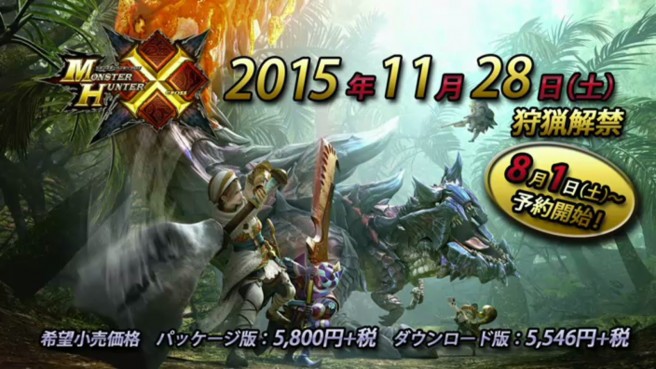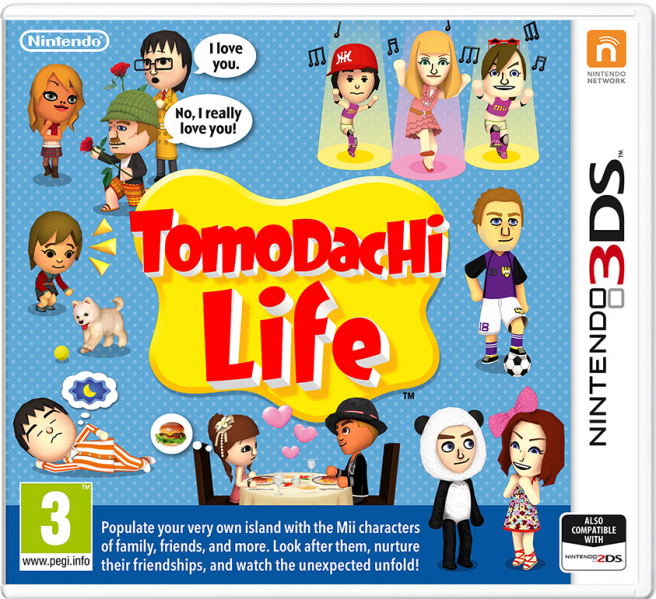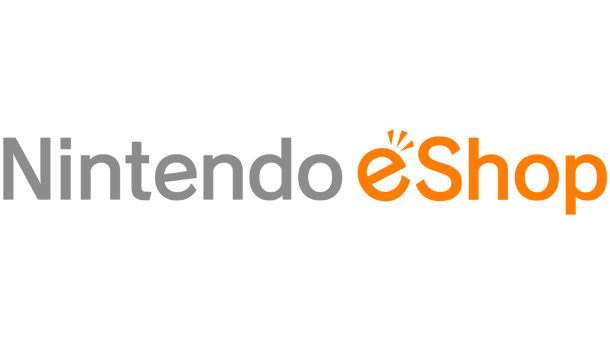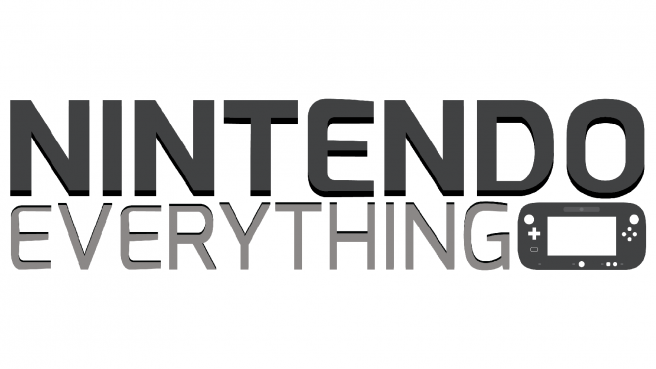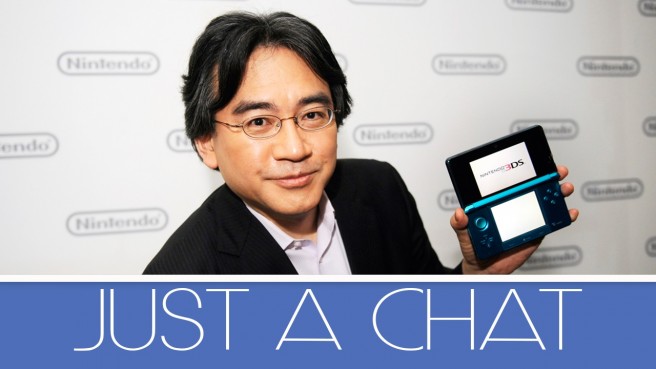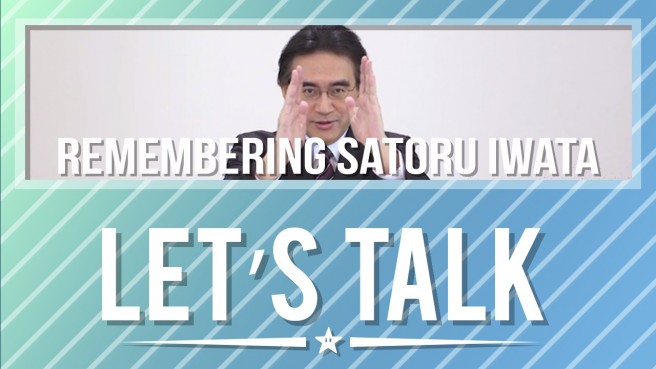Super Mario Maker Wii U bundle coming to Europe
Posted on 10 years ago by Brian(@NE_Brian) in News, Wii U | 23 Comments
Nintendo has revealed a Super Mario Maker Wii U bundle for Europe. It’ll come with a Wii U console, a copy of the game (with the art book), and Classic Colors Mario amiibo. Consumers can purchase the bundle when Super Mario Maker launches – September 11.
On Twitter, Nintendo posted the following message:
#SuperMarioMaker launches on 11/09 with three packs to choose from at retail. pic.twitter.com/wk3XZbQEVw
— Nintendo of Europe (@NintendoEurope) July 22, 2015
More: Europe, Super Mario Maker, top
Sakurai remembers Satoru Iwata
Posted on 10 years ago by Brian(@NE_Brian) in General Nintendo, News | 20 Comments
Masahiro Sakurai published a new column in the latest issue of Famitsu. His piece is entirely about Satoru Iwata, who just recently passed away.
Sakurai started out by stating the following when he heard the news: “My mind went white and even now the reality hasn’t sunk in.”
He then remembers the early days, and recalled how Iwata had been one of the interviewers when Sakurai applied for a job at HAL Laboratory Inc. “Our positions and locations changed throughout our long association,” he said. “He was the best superior I ever had and a man who understood me better than anyone.”
Later in his piece, Sakurai described Iwata in the following five ways:
He was a man of virtue. Where a normal person would get annoyed or angry, he would never show such emotions and would instead analyze, organize, and offer ideas. He was someone who could bow his head and apologize for things that weren’t his fault. I often worried about his stress levels, but he always talked with a smile.
He had a brilliant mind. Even when people would talk at length or without focus he was able to quickly say, “so, what you’re trying to say is…” and quickly summarize their point. He was able to see to the heart of people and things and was a master of simplifying them so that anyone could understand their point. He could immediately make a call on changes to improve. I have no doubt that many people were saved by this quality.
He was a man of effort. Even though he didn’t start out in the managing field, he read numerous management books, he would ask for advice from the necessary people that he would take to heart, and managed to become the president of Nintendo. What he gained from his years as a programmer allowed him to take many long-term projects to successful fruition.
More: Famitsu, Masahiro Sakurai, Satoru Iwata, top
Nintendo publishing Devil’s Third in North America in Q4 2015
Posted on 10 years ago by Brian(@NE_Brian) in News, Wii U | 46 Comments
Nintendo has finally put all speculation about the status of Devil’s Third in North America to rest.
The company has announced that the game will be made available “in retail locations” as well as through the eShop in Q4. Nintendo will be publishing the title.
Valhalla Game Studios founder Tomonobu Itagaki said:
“Devil’s Third delivers a unique combination of shooting and melee combat to provide Wii U owners with a fresh action-oriented experience. We’ve been working hard on the game and can’t wait for fans to get their hands on it later this year.”
It’s also now been revealed that a standalone version of Devil’s Third is in the works for PC. While the Wii U game features a single-player story mode and multiplayer, the “free-to-start” version for PC only comes with “a multiplayer experience tailored for the platform.” Valhalla Game Studios will be entirely responsible for the PC release.
Source: Nintendo PR
More: Devil's Third, top, Valhalla Game Studios
Nintendo and DigiPen launch DigiPen Game Studios
Posted on 10 years ago by Brian(@NE_Brian) in 3DS eShop, General Nintendo, News | 53 Comments
Nintendo and digital media university DigiPen – in conjunction with Media Development Authority – today launched the DigiPen Game Studios. This new group will be looking to discover and publish titles from Singapore.
DigiPen Game Studios will be scouting potential projects to support during a conference that will be held later in the year. Proposals that are chosen will be developed and eventually distributed for sale on the 3DS eShop, though other gaming systems could eventually follow. DigiPen International chief operating officer Jason Chu has said that the company hopes to select ten games from Singapore by next year.
Developers that are chosen for this new initiative will receive mentorship and assistance from DigiPen. Additionally, Nintendo intends to fully market the different games.
Thanks to Tenku_no_Miko for the tip.
More: DigiPen Game Studios, top
Monster Hunter X launches in Japan on November 28
Posted on 10 years ago by Brian(@NE_Brian) in 3DS, News | 1 Comment
Monster Hunter X is releasing in Japan on November 28, Capcom announced during Monster Hunter Tsudoi 2015 Summer. Reservations will begin on August 1. Pricing is set at 5,800 yen for the retail version and 5,546 yen for the download release.
There are also plans to release a New 3DS XL bundle for Monster Hunter X. This will feature a specially designed system. Pricing is set at 26,000 yen.
Aside from that, Capcom confirmed that two 3DS themes are in the works, and Nargacuga from Monster Hunter Freedom Unite and 3 Ultimate will be returning.
Fans can go hands-on with Monster Hunter X at the Tokyo Game Show in September. Weapon videos will be shown each day between August 1 and 7.
More: Capcom, Japan, Monster Hunter X, top
Tomodachi Life has sold over 1.5 million copies in Europe
Posted on 10 years ago by Brian(@NE_Brian) in 3DS, News | 1 Comment
Tomodachi Life has sold more than 1.5 million copies in Europe, Nintendo revealed today. The game originally launched in the region last June.
We previously heard last December that over 1 million copies of Tomodachi Life had been sold in Europe.
Today’s news comes as part of a Tomodachi Life Friendship Fiesta for the territory. More information about the event can be found here.
Source: Nintendo PR
More: sales, Tomodachi Life, top
Nintendo Download (7/23/15, Europe): Yoshi Touch & Go, 3D Streets of Rage 2 and more
Posted on 10 years ago by Matt(@OnePunchMaz) in 3DS eShop, News, Wii U eShop | 1 Comment
This week’s European Nintendo Downloads are as follows:
Wii U Download
Blocky Bot – £1.89/€2.69
Canvaleon– £10.80/€11.95 until 6th August 2015, normally £12.59/€13.95
Wii U Virtual Console
Yoshi Touch & Go (DS) – £6.29/€6.99
3DS Download
3D Streets of Rage 2 – £4.49/€4.99
I Love My Cats – £19.99/€24.99
Mercenaries Saga 2 – £3.99/€4.99
Ninja Battle Heroes – £1.79/€1.99
eShop Sales
3DS
Conception II: Children of the Seven Stars – £13.49/€14.99 until 30th July 2015, normally £24.99/€29.99
Monster Hunter 4 Ultimate – £24.99/€29.99 until 30th July 2015, normally £39.99/€44.99. The discount only applies if you have downloaded the demo version of the game with the same Nintendo Network ID.
Zombie Panic in Wonderland DX – £4.49/€4.99 until 21st August 2015, normally £6.30/€7
Source: Nintendo PR
More: Europe, Nintendo Download, top, Virtual Console
Let’s try out this Patreon thing
Posted on 10 years ago by Brian(@NE_Brian) in Site updates | 35 Comments
Running Nintendo Everything is extremely difficult. It can be very stressful. So much of my time and energy is poured into the site every single day, and I usually don’t have much time to relax. I have my hands in so, so many different areas of the site, including plenty of things that aren’t immediately visible to those who visit.
All of that said, there’s a reason why I continue working on Nintendo Everything each day, and it’s quite simple. The bottom line is that I love it. I love writing about Nintendo in one form of another. I love being able to share updates with those who stop by. I take pride in the fact that many people get enjoyment out of the updates I post. I’ve said it before, and I’ll say it again: Nintendo Everything has become very much embedded in my daily life, and the site means an incredible amount to me. You all are very important to me as well.
I want to keep working on Nintendo Everything for as long as I can and in the same manner that I have been these past few years. There’s just one major roadblock that has cropped up as of late.
Earlier this month, I put up two crucial site-focused posts. Both of them were financial related. The site, and myself in turn, are struggling in this area. The ads we have on Nintendo Everything help, but they aren’t bringing in the type of revenue that is needed to avoid a major change. I asked for some guidance from you all, and one of the top suggestions was Patreon, which I’ve now decided to pursue.
What is Patreon?
Patreon is sort of like Kickstarter in a way. The campaign we’ve set up allows for people to donate a set amount to the site each month. This can be as low as $1, or something higher. The pledge amount is completely determined by you. Pledges can be changed from month to month if that’s something you’re interested in, and you can even choose to completely cease pledges at any point.
I’ve set up a few different rewards similar to other Patreon campaigns you may have come across. The base reward ($1) is entry into our Hall of Fame, which is now live on the site. We’ll be adding in names – sorted by pledge amounts – once the first month has passed. There are other rewards as well, including access to our Patreon feed where you’ll receive sneak peaks at updates coming to the site, entry into special monthly giveaways, and more.
Something I do want to stress is that Patreon isn’t impacting our coverage of Nintendo in the slightest. We won’t be locking content away behind it, and everything will proceed on Nintendo Everything as normal.
The end!
I have no idea what to expect from Patreon. Heck, this thing could potentially bomb bigtime. But I truly want to thank everyone who will be supporting us through Patreon, and hopefully the site can continue on for years to come!
Nintendo Everything is now on Patreon here!
[Just a Chat] Satoru Iwata
Posted on 10 years ago by Brian(@NE_Brian) in General Nintendo, Just a Chat, Videos | 1 Comment
Jon and I discussed the tragedy surrounding the passing of Nintendo president Satoru Iwata in this week’s episode of Just a Chat. It was rather tough to get through, but we managed to record this somehow!
Stuff:
More: highlight, Satoru Iwata, top
[Let’s Talk] Remembering Satoru Iwata
Posted on 10 years ago by Brian(@NE_Brian) in Let's Talk | 4 Comments
Let’s Talk #15: Remembering Satoru Iwata
Given the tragedy surrounding Satoru Iwata, it only seemed right to dedicate this week’s Let’s Talk to his memory. In the comments below, feel free to talk about anything related to Nintendo’s president.
It’s crazy to think that Satoru Iwata is no longer here with us. It’s also crazy to think that everything happened less than a week ago. Despite it having been a few days, I’m still barely able to come to grips with the fact that Iwata passed away.
A lot of thoughts and emotions have been running through my mind since Sunday evening. I can’t begin to tell you how shocked I was when I heard that Iwata had passed away. I just happened to stumble across Nintendo’s IR site with the news – it wasn’t even publicized on Nintendo’s Japanese Twitter account at the time. I almost considered not posting about it on the site when I discovered the announcement since I couldn’t believe it was real. I haven’t been that shocked about something in a very long time.
Even though I never knew Iwata personally, his passing has greatly affected me. It’s been a very sad and long week. There was a lot about Iwata that made him different compared to your typical company president/CEO, so I think that’s one of many reasons reason why many people have been taking this so hard.
Iwata seemed like a very lovely and personable man. Of course, he delivered the Nintendo Direct presentations to us, and during those videos, he wasn’t afraid to poke fun at himself. The Iwata Asks series was another key aspect during his time with Nintendo. These interviews/discussions provided very interesting and valuable insight into the development of Nintendo’s various games.
Iwata’s experience with game development made him quite the unique president. Of course, before joining Nintendo, he worked at HAL. Over the many years in the industry, he was involved with games like Balloon Fight, EarthBound, and Pokemon. He even helped Smash Bros. Melee make its release date. He was a programmer at heart having made a baseball game on a calculator despite it not having graphics.
A lot of people have been asking me over the past few days if I have a favorite memory of Iwata. Truthfully, I don’t. That’s because when I start thinking about his role at Nintendo, there’s so much that comes to mind. There are all of his Nintendo Directs obviously. E3 appearances. 2005 GDC speech. There was also the Game Center CX episode that struck a chord with me, in which he talked more about his life. And those are just the times we saw him in person. Outside of video-esque appearances, there was the time when he dramatically cut his salary in light of the Wii U’s struggles. Introducing Wii and DS to the world, and initiating the Blue Ocean Strategy to wild success were also key parts of his career.
I started paying attention to games during the tail end of the GameCube era, so honestly, Iwata being at Nintendo is really all that I know. It’s extremely tough to picture Nintendo without Iwata at the helm of things. Nintendo will most definitely continue on, but things won’t be the same without him. All we can do at this point is be thankful for his many years at Nintendo and how he put smiles on many people’s faces. He will be greatly missed.
How do you feel about Devil’s Third?
slihm
I’ve been extremely intrigued ever since the multiplayer trailer last year.
Additionally, the campaign looks to have my type of humor. It’s odd because a lot of people seem to be missing the jokes all together. For reference, watch the “Machete Kills” trailer. It’s basically that kind of humor, but in a game. And it’s amazing.
Recent news has made me a little skeptical. The only thing I’m concerned about is the frame rate, because people who have allegedly played the game have been complaining about the inconsistent frame rate.
Blazer
As far as Devil’s Third go, I was interested in the game after seeing it. It’s not the usual type of game you find on Nintendo consoles, but the fact that they seemed to be backing it felt like a sign that I could pay it a little bit of attention. After seeing a bit, I was interested in it because it seemed like a brutal but fun action/shooter game with some cool online components, which I felt I could get behind, especially since it didn’t look as dull as some games.
The concept art, for instance, looks really cool IMO, and while you could certainly make complaints about the main character, I’m fine with his design and approach: he’s at least more memorable than the main characters in many other shooters, IMO. Pretty much, it was a game I had intended to give a good chance since there’s not much else like it on the console, and I like supporting developers who make exclusives for Wii U, esp. since I’ve enjoyed the Wii U a lot–more than most other systems. Dare I say it helped get me back into gaming with a few quality games despite lacking quantity.
Now that the game potentially isn’t being backed by NoA and could be very poor for whatever reasons, I’m less interested/more skeptical and need to have some kind of confirmation on how the game is. I mean, we’ll just have to see, there aren’t even reviews out and even then I take reviews and such with a grain of salt because ultimately they’re just opinions from people who are often only slightly more qualified to analyze, criticize, and praise games than the bulk of other people.
While I’d like to give it a try anyway, if the game is said to be terrible, it’s difficult to justify purchasing it, especially when video games are expensive and there are a ton of other video games out there I’ve yet to beat… play… buy… or even hear about. I mean, I only have so much time, money, and patience, so ultimately I can’t try out every game myself. Hopefully I hear some good things about it so I can keep my pre-order and get it as planned. In that case though, I can only hope someone else actually picks it up so I have people to play with online.
Not having more than a handful of friends (who I rarely talk to) that play Splatoon, for instance, really stinks. I had pretty much no one to play Bayonetta 2 with, either. It’s one of the few problems of preferring to play with friends (esp. with voice, meaning on the Wii U, I need to have them on Skype/they can’t be strangers, since it doesn’t have integrated voice chat into its games), and playing on a console with a low install base in specific regions (I’m not interested in voice chatting with random Japanese people, for instance, but if you limit matchmaking in such games to specific regions where there’s a common language, the wait etc. would be even longer than it already is).
tl;dr, I was interested, and will still pay attention, but I’m skeptical and my purchasing decision hangs in the balance of whether the game seems good enough to be worth giving a chance.
Pretty much, if it’s not a broken game and it’s at least fun but “with problems”, and the Metacritic score is in the 70’s or higher, I’ll probably get it. If it’s in the 60’s, it’ll be a much tougher call dependent on what specifics I hear about the game, and anything lower would really be pushing it. (Granted, it’s less about the arbitrary numbers we call review scores and more with the associated comments that generally come with those numbers.)
